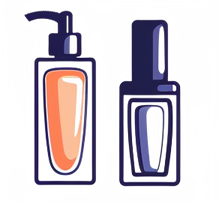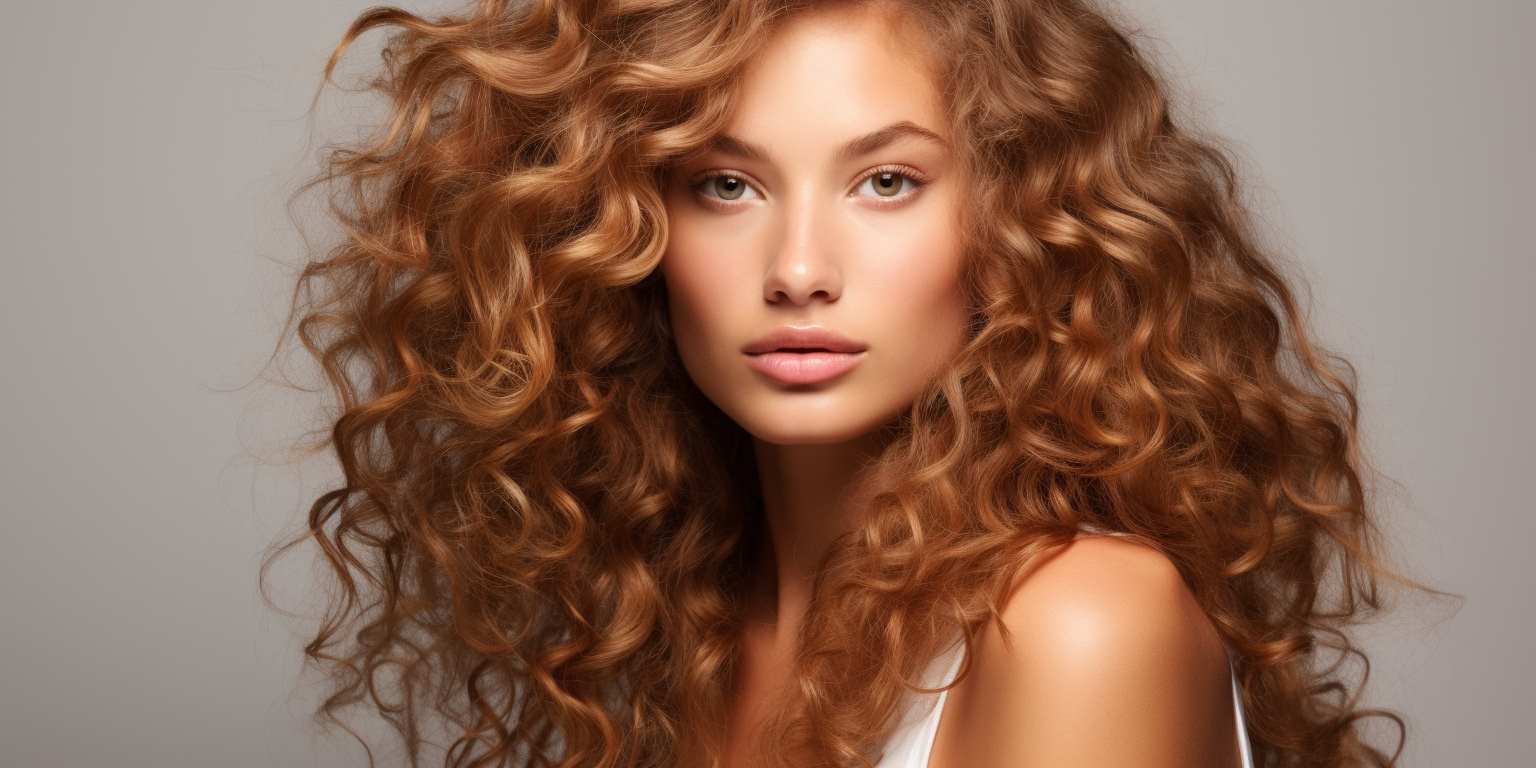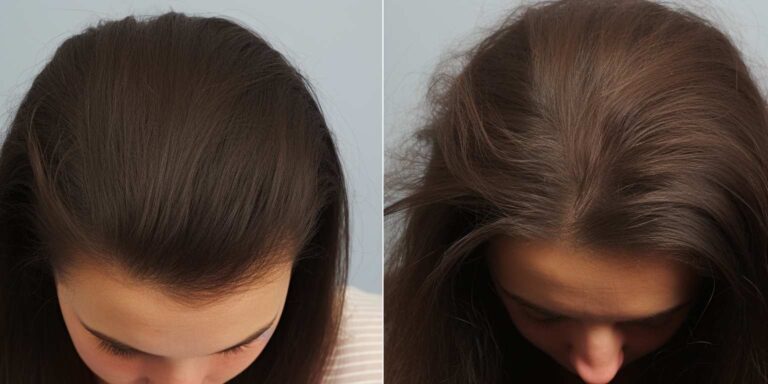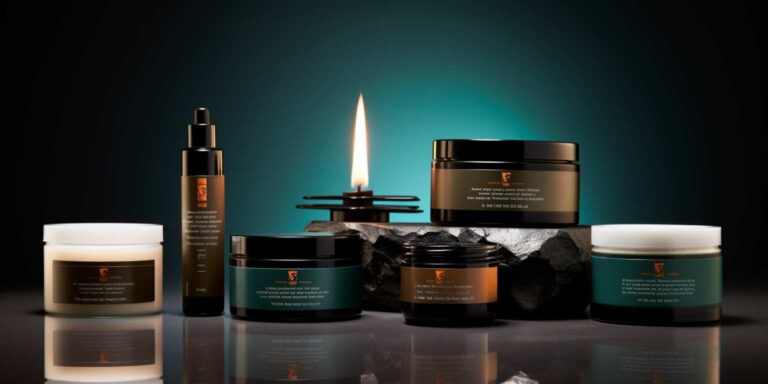The best shampoo for permed hair care
One of the key considerations when selecting a shampoo for permed hair is hydration. Look for shampoos that are infused with moisturizing ingredients such as argan oil, coconut oil, or shea butter. These ingredients help hydrate and nourish the hair shaft, keeping your curls soft and supple.
Gentleness is another important factor to keep in mind. Permed hair is more fragile and prone to breakage, so you’ll want to avoid harsh shampoos that can strip away natural oils and cause further damage. Look for shampoos that are sulfate-free and gentle on the scalp.
Additionally, protection against frizz is often a concern for those with permed hair. To combat frizz and maintain smooth, defined curls, consider using a shampoo that contains anti-frizz ingredients such as keratin or silicone. These ingredients help seal the hair cuticle, preventing moisture loss and keeping frizz at bay.
It’s also worth noting that color-treated permed hair requires special care. If you’ve colored your permed hair, look for shampoos that are designed for color-treated hair. These shampoos are formulated to preserve color vibrancy while also providing the necessary hydration and protection for permed hair.
When shopping for the best shampoo for permed hair, consider your specific hair type and concerns. Whether you have fine curls that need volumizing or thick curls that need extra moisture, there’s a shampoo out there tailored to your needs.
Elevating your curls with curl enhancing shampoo
Curl enhancing shampoo can be a game-changer for those looking to elevate their curls to new heights. These specialized shampoos are formulated with ingredients designed to define and boost your natural curl pattern, leaving you with gorgeous, bouncy curls that command attention.
One of the key benefits of curl enhancing shampoo is its ability to hydrate and nourish your curls, resulting in improved elasticity and less frizz. Ingredients like shea butter and coconut oil work together to moisturize and strengthen each strand, promoting healthier curls from root to tip.
Curl enhancing shampoos also often contain botanical extracts such as aloe vera and green tea, which provide antioxidant properties to protect your curls from environmental damage. This helps to maintain the integrity of your curls and prolong their liveliness between washes.
When using a curl enhancing shampoo, it’s important to massage it gently into your scalp and through your hair, ensuring that every strand is coated with the beneficial ingredients. Let the shampoo sit for a few minutes to allow the active ingredients to penetrate the hair shaft before rinsing thoroughly.
For optimal results, follow up with a curl enhancing conditioner to further hydrate and define your curls. This will help to seal in moisture and enhance the effects of the shampoo, leaving you with soft, manageable curls that are ready to take on the day.
Preserving your perm with the right conditioner
Preserving your perm with the right conditioner is essential for maintaining those gorgeous curls and waves. Whether you’ve just gotten a fresh perm or you’re a seasoned perm veteran, choosing the right conditioner can make all the difference in how long your perm lasts and how healthy your hair remains.
First things first, let’s talk about what makes a conditioner perm-preserving. Look for ingredients like keratin and amino acids, which help to strengthen the hair shaft and maintain the structure of your curls. Hydrating ingredients such as shea butter and coconut oil are also crucial for keeping your curls moisturized and preventing frizz.
When shopping for a perm-preserving conditioner, avoid products containing sulfates and silicones. Sulfates can strip the hair of its natural oils, leading to dryness and damage, while silicones can create buildup on the hair shaft, weighing down your curls and causing them to lose their bounce.
Instead, opt for gentle, sulfate-free formulas that are specifically designed for curly or permed hair. These products will cleanse your hair without stripping away its natural oils, leaving your curls soft, bouncy, and full of life.
Another factor to consider when choosing a perm-preserving conditioner is moisture retention. Look for products that contain humectants like glycerin and panthenol, which help to attract and retain moisture in the hair shaft, keeping your curls hydrated and healthy.
Frequency of use is also important when it comes to preserving your perm. While it’s tempting to wash your hair every day, especially if you have oily roots, over-washing can actually strip your hair of its natural oils and cause your perm to lose its shape more quickly.
Instead, aim to wash your hair no more than two to three times a week, using a perm-preserving conditioner each time. On days when you don’t wash your hair, you can refresh your curls with a spritz of water and a small amount of conditioner, focusing on the ends where your hair tends to be driest.
Deep conditioning treatments are also a great way to keep your curls looking their best. Try using a hydrating hair mask once a week to replenish moisture and nourish your curls from root to tip.
Daily routines for permed hair maintenance
Permed hair requires special care to maintain its curl and vitality. Daily routines play a crucial role in keeping permed hair healthy and vibrant. Let’s delve into the essential steps you need to incorporate into your daily hair care regimen.
1. Moisturizing: Hydration is key for permed hair. Use a moisturizing shampoo and conditioner specifically formulated for permed or curly hair. These products help retain moisture and prevent dryness, which can lead to frizz and dullness.
2. Gentle Handling: Treat your permed hair with care to avoid damage and breakage. Use a wide-tooth comb or your fingers to detangle your hair gently, starting from the ends and working your way up to the roots. Avoid brushing your hair when it’s dry, as it can cause frizz and disrupt the curl pattern.
3. Avoid Heat: Minimize heat styling to maintain the integrity of your curls. Excessive heat from blow dryers, flat irons, and curling wands can damage the hair shaft and cause the curls to loosen or become limp. Embrace air-drying whenever possible or use a diffuser attachment on your blow dryer to dry your hair gently without disrupting the curls.
4. Use Leave-In Products: Incorporate leave-in conditioners, serums, and creams into your daily routine to keep your permed hair moisturized and frizz-free. These products provide an extra layer of hydration and help define your curls for a more polished look.
5. Protect Your Hair While Sleeping: Invest in a satin or silk pillowcase to prevent friction and minimize frizz while you sleep. You can also wrap your hair in a silk scarf or use a satin bonnet to protect your curls overnight. This helps maintain the shape and definition of your curls between washes.
6. Limit Washing: Avoid washing your permed hair too frequently, as it can strip away natural oils and disrupt the curl pattern. Aim to wash your hair no more than two to three times a week, using a sulfate-free shampoo and conditioner designed for curly or permed hair.
7. Refresh Curls: On days when you don’t wash your hair, use a curl refreshing spray or mist to revive your curls and combat any frizz or dullness. Simply spritz the product onto your hair and scrunch it gently to reshape and redefine your curls.
Avoiding common permed hair pitfalls
Avoiding Common Permed Hair Pitfalls
Perming your hair can be an exciting way to add volume and texture to your locks, but it’s essential to navigate the process carefully to avoid common pitfalls that could leave you with damaged or less-than-desirable results. Whether you’re a first-time permer or a seasoned pro, here are some key tips to ensure your perming experience is a success.
Understanding Your Hair Type
Before diving into the perming process, it’s crucial to understand your hair type. Different hair types react differently to perms, so what works for one person may not work for another. If you have fine or damaged hair, you’ll need to take extra precautions to prevent over-processing and breakage.
Consulting with a Professional
While at-home perming kits may seem convenient, consulting with a professional hairstylist is the best way to ensure your perm turns out as desired. A stylist can assess your hair’s condition, recommend the right perm solution, and tailor the process to your specific needs.
Choosing the Right Perm Solution
There are several types of perm solutions available, each designed for different hair types and desired outcomes. From alkaline perms for resistant hair to acid perms for delicate strands, choosing the right solution is crucial for achieving optimal results.
| Perm Solution | Best for Hair Type |
|---|---|
| Alkaline Perm | Resistant or coarse hair |
| Acid Perm | Delicate or damaged hair |
| Exothermic Perm | Fine or color-treated hair |
Protecting Your Hair
Perming chemicals can be harsh on your hair, so it’s essential to protect it both during and after the perming process. Deep conditioning treatments can help restore moisture and prevent damage, while using heat protectant products before styling can minimize heat damage.
Maintaining Your Perm
Once you’ve achieved the perfect perm, proper maintenance is key to keeping your curls looking their best. Avoid over-washing your hair, as frequent washing can strip away natural oils and cause your perm to lose its shape. Instead, opt for sulfate-free shampoos and conditioners designed for curly hair to help maintain moisture and definition.
Avoiding Heat Damage
Selecting products for healthy curly hair
When it comes to nurturing those luscious locks of curly hair, selecting the right products is paramount. Curly hair has its own unique needs, requiring moisture, definition, and gentle care to thrive. Let’s delve into the essentials of choosing products for healthy curly hair.
First and foremost, hydration is key. Curly hair tends to be drier due to its spiral shape, which makes it difficult for natural oils to travel down the hair shaft. Look for moisturizing shampoos and conditioners that are sulfate-free. Sulfates can strip away natural oils, leaving curly hair even more parched.
Deep conditioning treatments are a curly-haired individual’s best friend. Opt for products enriched with ingredients like shea butter, coconut oil, or argan oil to provide intense hydration and nourishment to your curls. Consider incorporating a deep conditioning mask into your weekly hair care routine to keep your curls soft, supple, and resilient.
When it comes to styling products, curl creams and leave-in conditioners are essential for defining curls and combating frizz. Look for products that contain humectants like glycerin or panthenol to attract moisture to your hair and lock it in. Avoid heavy silicones and drying alcohols, as they can weigh down your curls and cause them to become brittle.
Gel can be another valuable tool in your curly hair arsenal, especially for those with coarser or tighter curls. Choose a gel that provides hold without leaving your hair crunchy or stiff. Apply it to wet or damp hair, scrunching it in to encourage curl formation, and allow your hair to air dry or use a diffuser on a low heat setting.
It’s also essential to protect your curls while you sleep. Consider investing in a satin or silk pillowcase to reduce friction and prevent breakage. You can also pineapple your curls by gathering them loosely at the top of your head and securing them with a scrunchie or hair scarf to preserve their shape overnight.
The science behind perm preservation
In recent years, the science behind perm preservation has garnered significant attention, offering a glimpse into the possibilities of extending the lifespan of these delicate biological structures. Perms, short for permafrost-preserved remains, encompass a wide array of organic matter ranging from ancient animals to plant material, providing invaluable insights into Earth’s history.
The preservation process begins with the phenomenon of permafrost, where layers of soil and rock remain consistently frozen for extended periods. This natural freezer acts as a time capsule, halting the decomposition of organic matter and effectively preserving it for thousands, sometimes millions, of years.
One of the key components of perm preservation lies in the low temperatures sustained within permafrost regions. These frigid conditions inhibit microbial activity, slowing down the decay process to a near standstill. As a result, organisms trapped within the permafrost can remain remarkably intact, retaining anatomical structures and genetic material.
Furthermore, the anoxic (oxygen-deprived) environment within permafrost prevents aerobic bacteria from breaking down organic matter through oxidative processes. This lack of oxygen creates an environment conducive to the preservation of soft tissues, fur, feathers, and even stomach contents, offering researchers unprecedented opportunities for analysis.
Researchers have utilized advanced technologies such as radiocarbon dating, DNA analysis, and proteomics to unlock the secrets held within permafrost-preserved specimens. By extracting genetic material from well-preserved specimens, scientists can reconstruct ancient genomes, shedding light on evolutionary relationships, population dynamics, and environmental adaptations.
A notable example of perm preservation’s impact is the discovery of Yuka, a remarkably well-preserved woolly mammoth unearthed in Siberia. Yuka’s remarkably intact carcass provided scientists with invaluable insights into mammoth physiology, diet, and habitat preferences, enriching our understanding of Ice Age ecosystems.
However, perm preservation also faces challenges, including the threat of climate change. As permafrost regions warm and thaw due to rising temperatures, previously preserved specimens may degrade rapidly, risking the loss of irreplaceable scientific data. This highlights the urgent need for proactive conservation efforts and the development of innovative preservation techniques.







